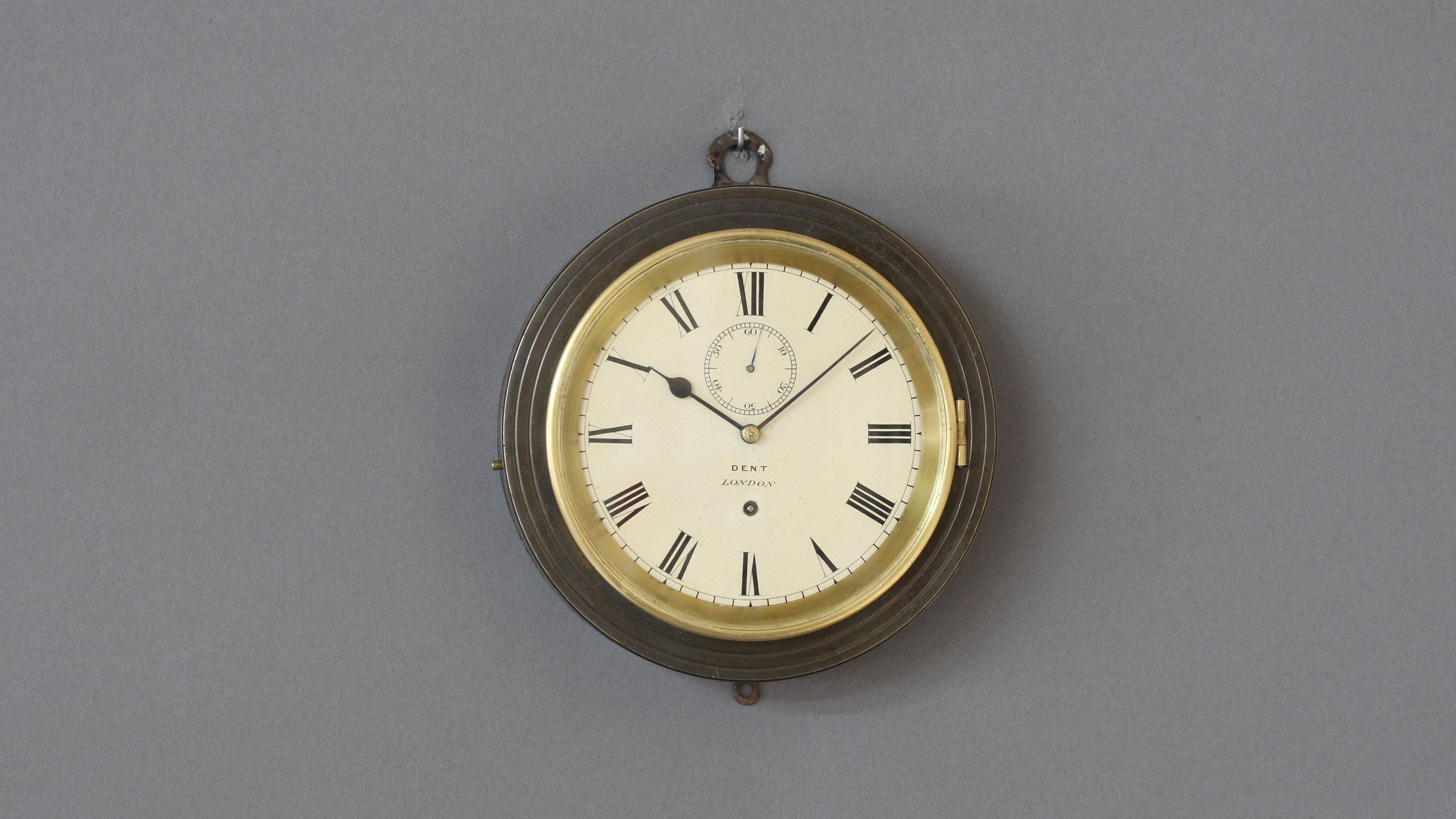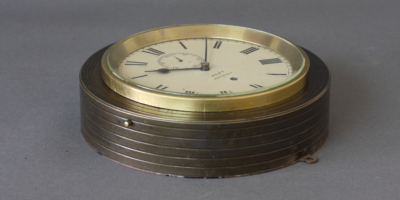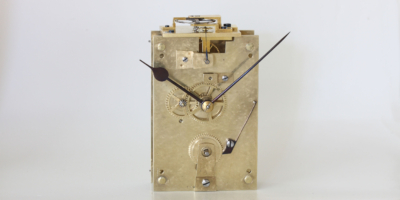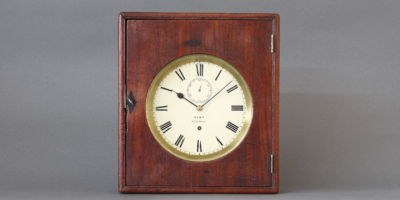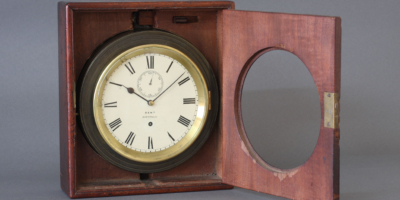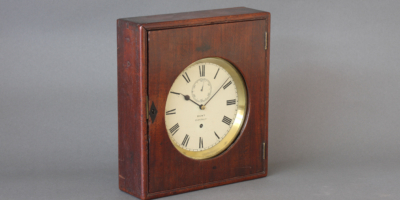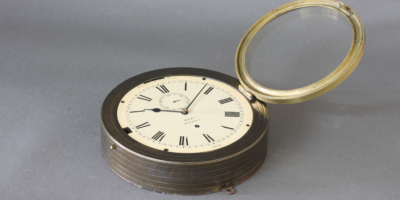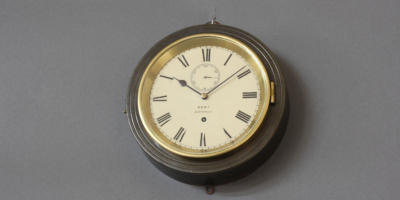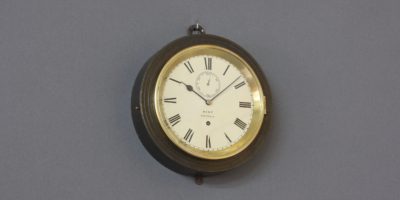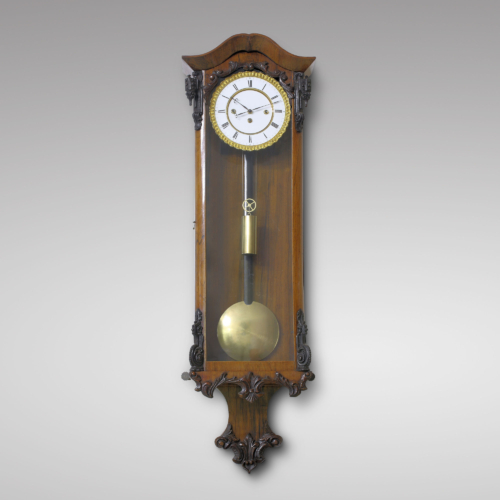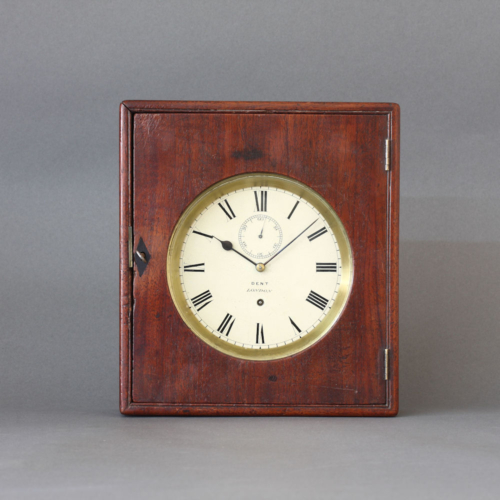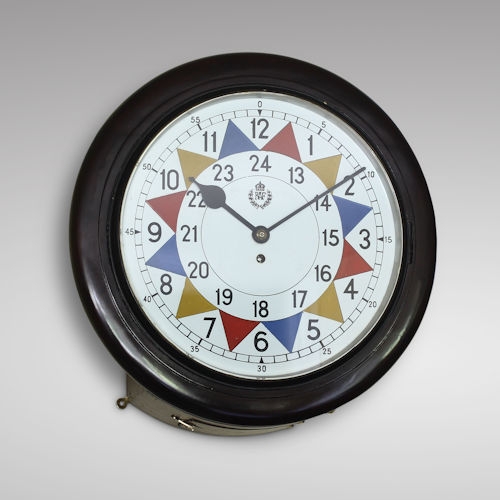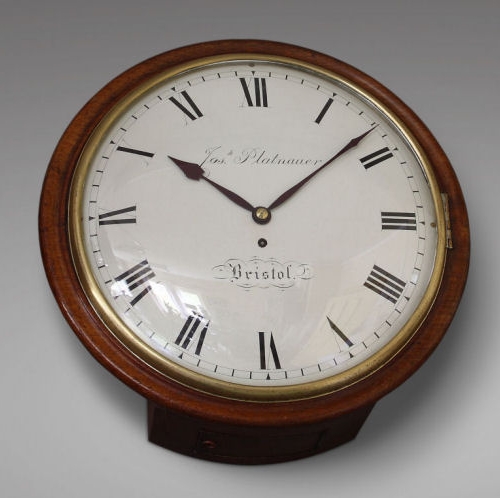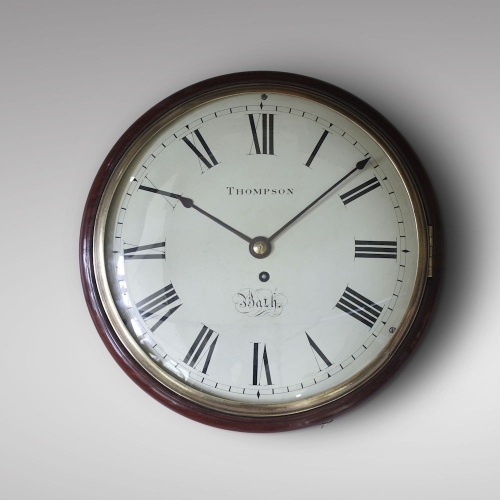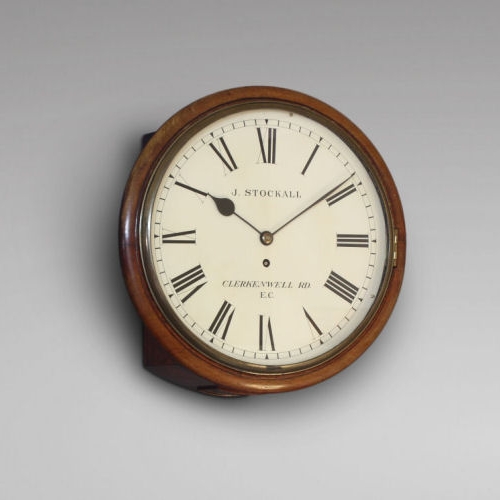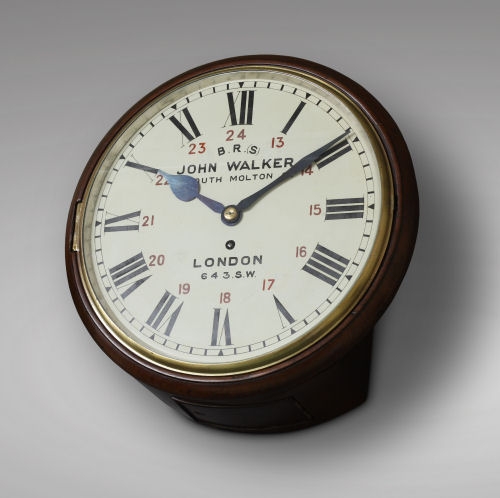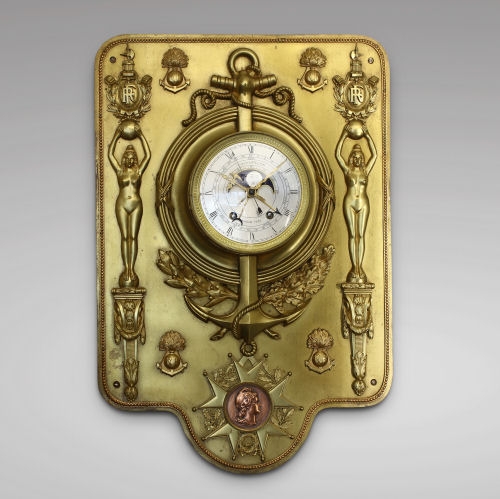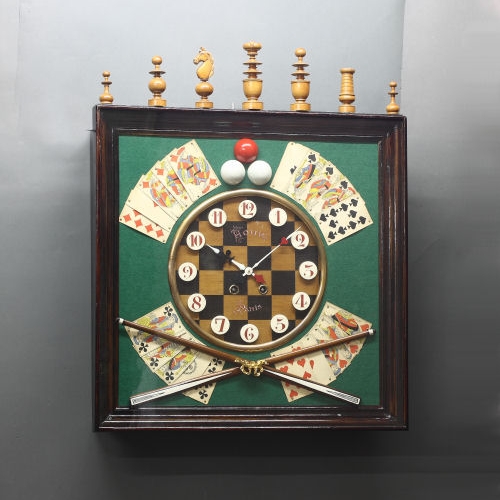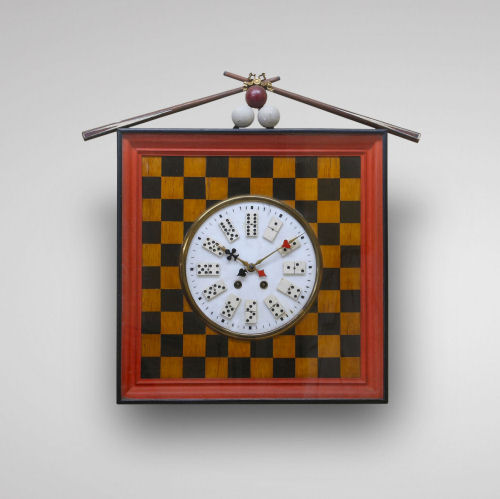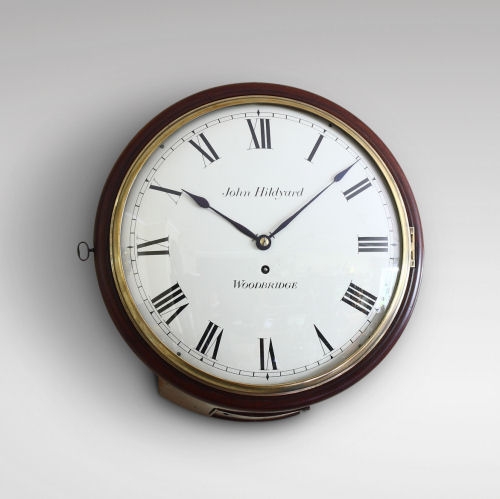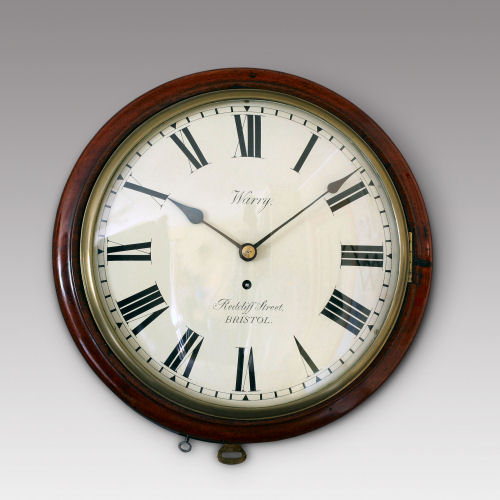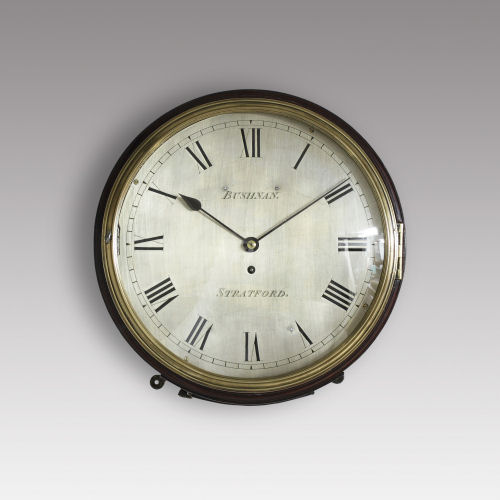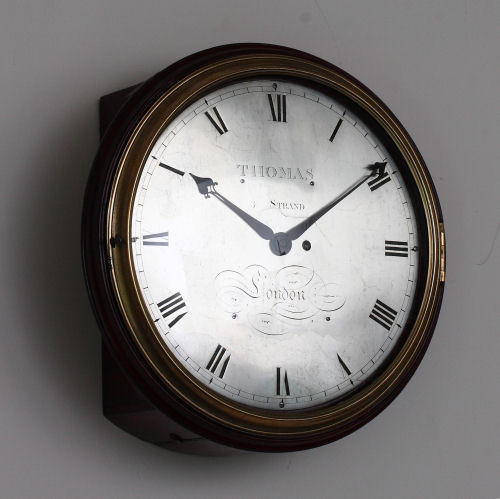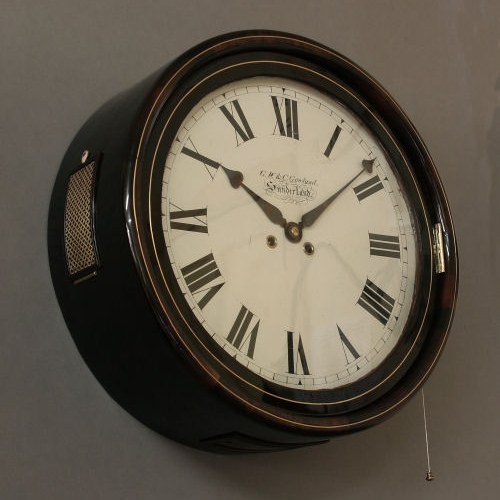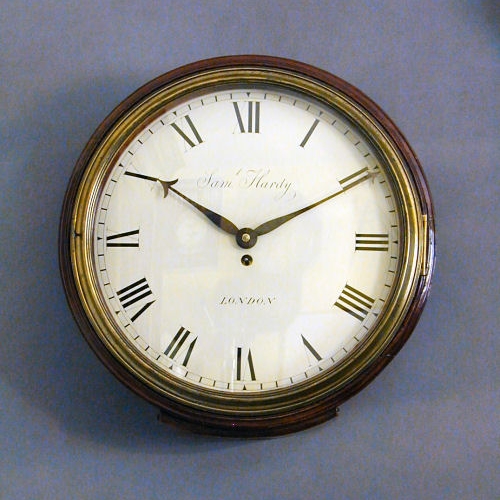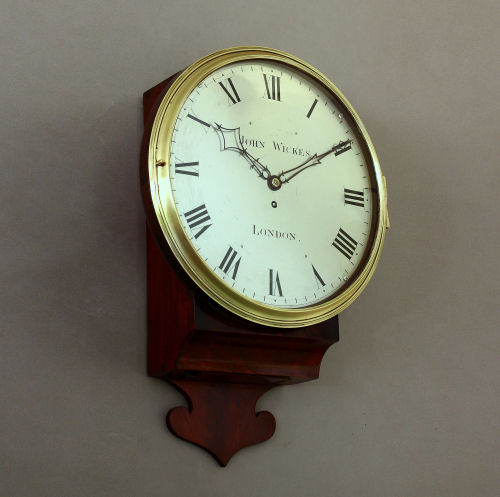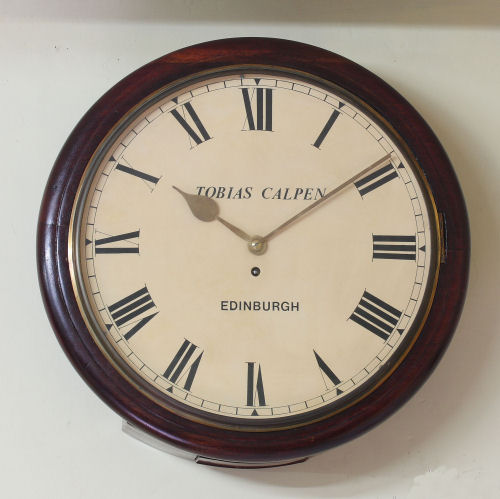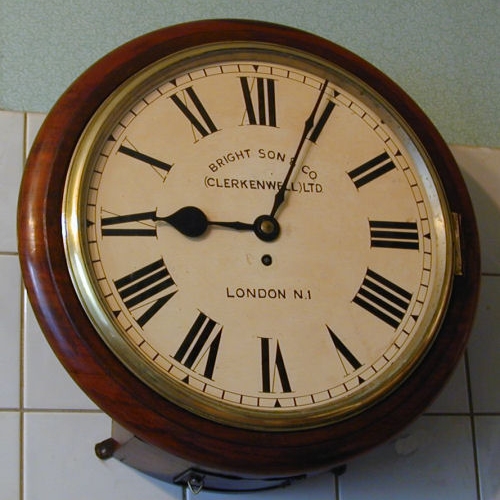Small Wall Clock with its transport case, the clock in a brass, turned and patinated case, closed by a front door with a latch activated by a small button on the left side, a larger keyhole on top for hanging, a smaller keyhole at the bottom for setting straight.
The painted dial with the signature DENT LONDON under the centre, the three blued steel hands, the subsidiary seconds under the numeral XII.
The vertical rectangular movement with four turned pillars, with a horizontal crab-tooth escapement platform. The very finely cut ratchet wheel. Autonomy eight days.
Very unusual transport box with its own latch and key, it can also be suspended and has an inner wooden latch for securing the clock inside.
Dimensions
Diameter: 7ʺ (18cm), Depth: 2ʺ (5cm)
The box: Height: 9¼ʺ (23cm), Width: 8ʺ (21cm), Depth: 2½ʺ (6cm)
Dent
Edward John Dent was born in 1790 and was apprenticed by his grandfather. He was quickly becoming employed by well known firms including Vuillamy, Barraud and McCabe until 1929. He went into partnership with John Roger Arnold in 1830 and was admitted to the Clockmaker’s Company and given the Freedom of the City of London in 1831. By 1840 he was in business by himself, and he gained the contract in 1844 to supply the Great Clock in Westminster which finally gave him fame and fortune. The Westminster Clock became popularly known as Big Ben, although strictly the name only applies to the large hour bell. He continued in business until his death in 1853 at which stage the business continued to prosper well into the 20th Century.
Bibliography
G.H. Baillie, Watchmakers and Clockmakers of the World, 1925; Derek Roberts Antiques, Catalog of Exhibition of Fine Antique Clocks, Autumn 2008;
Price
€ 4900
